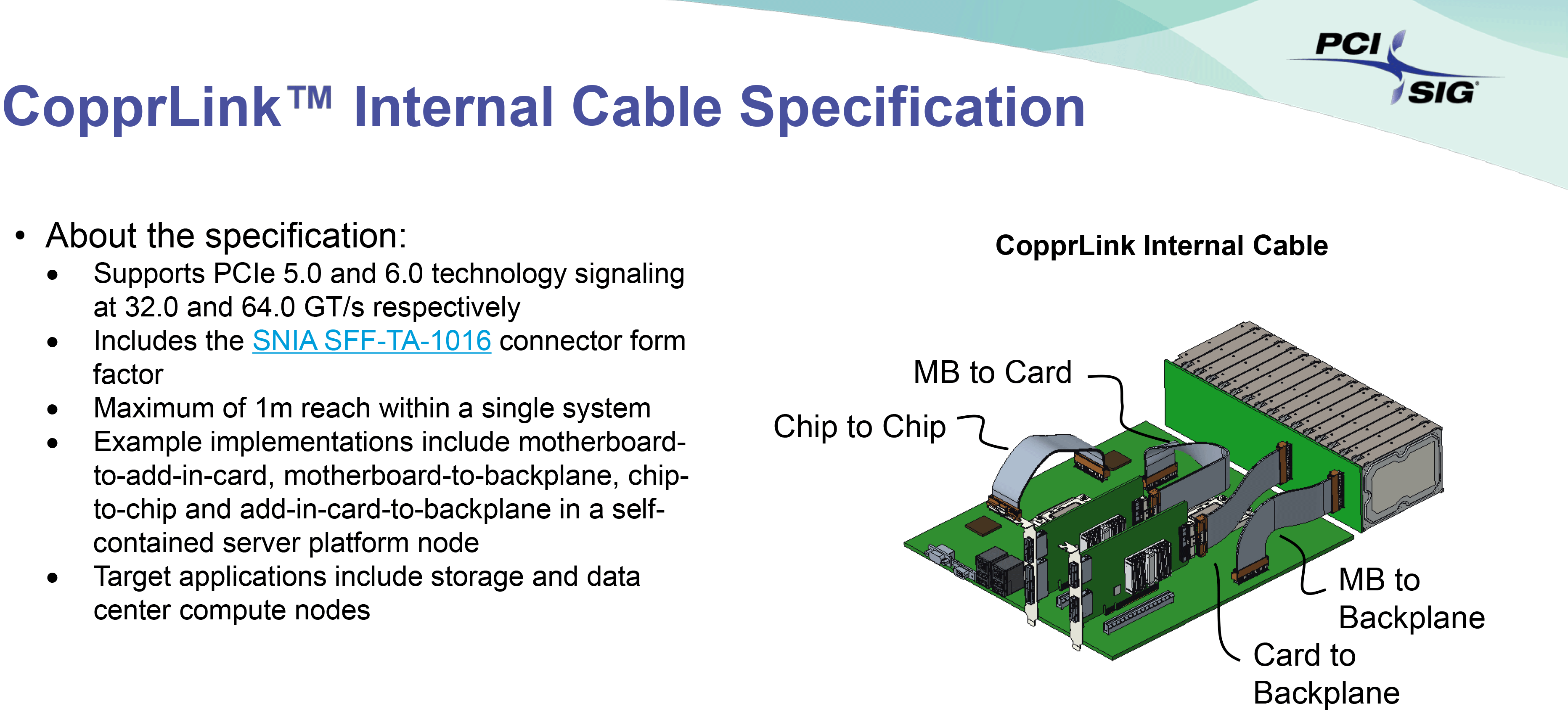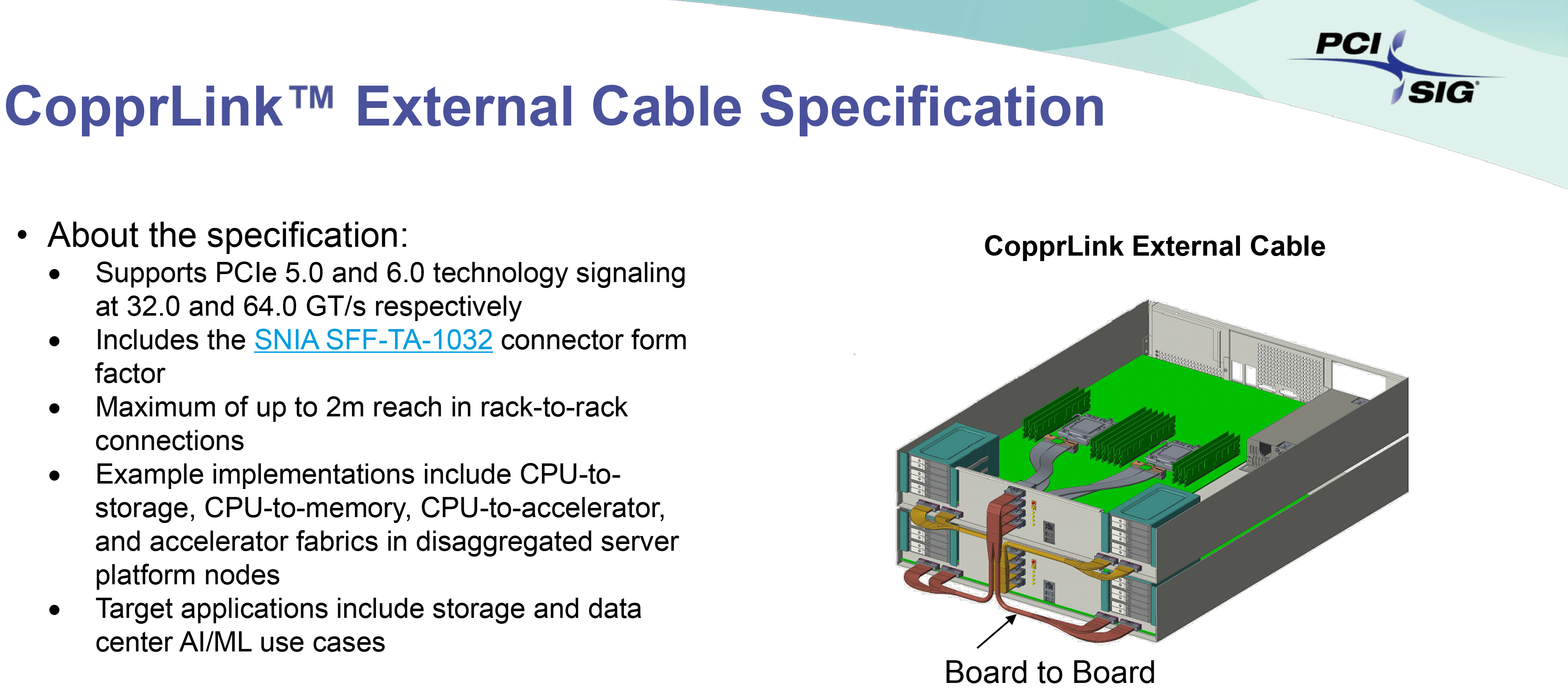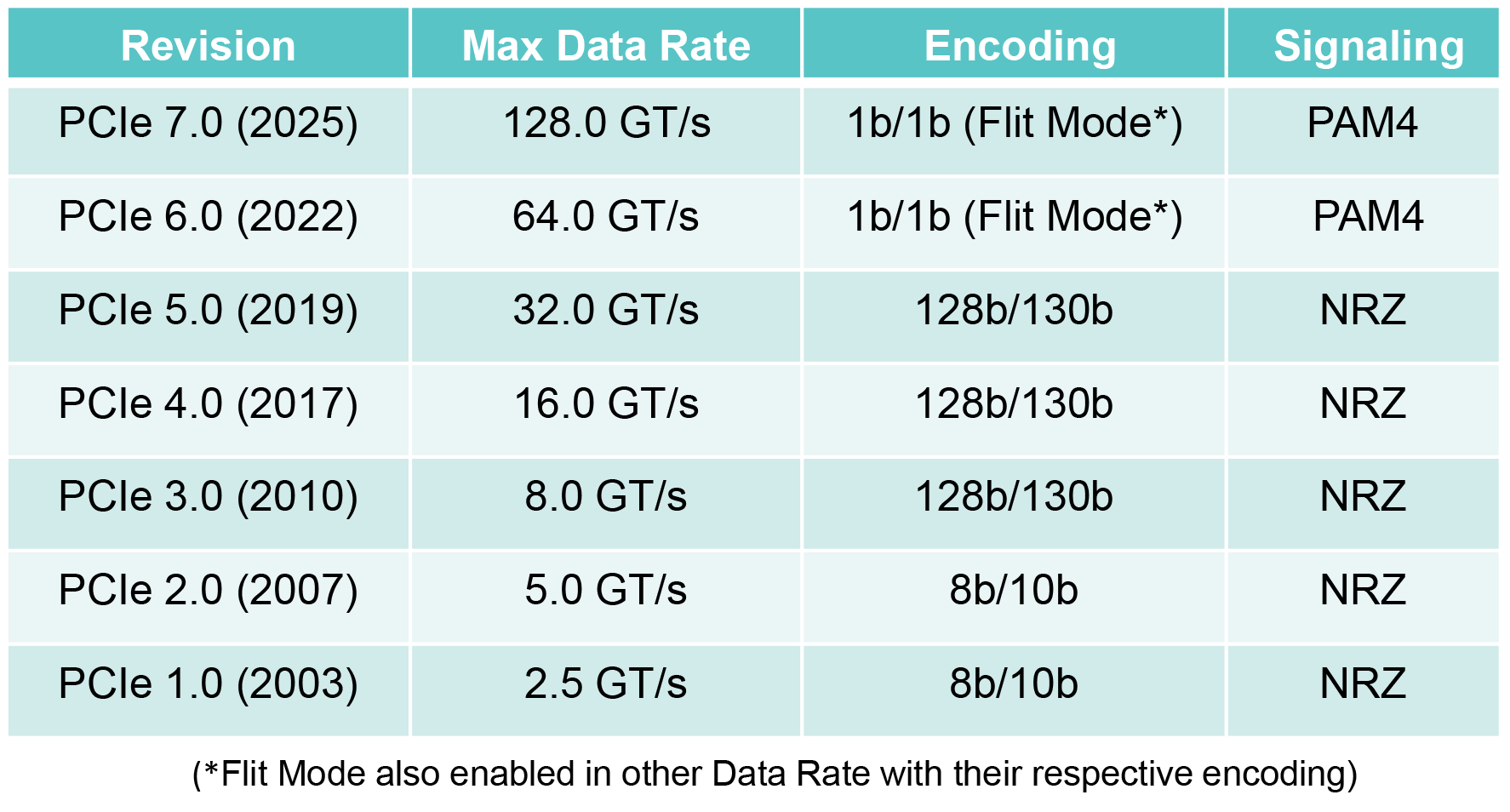PCI-SIG unveils CopprLink cables for PCIe 5 and 6 connections — PCIe 7.0 versions are under development
Pathfinding for CopprLink PCIe 7.0 cables at 128 GT/s begins.

PCI-SIG has announced CopprLink internal and external cable specifications for PCIe 5.0 and PCIe 6.0 interconnections. These new CopprLink-branded cables are designed to enable high-performance cabled connections for AI, storage, and data center applications at 32 GT/s and 64 GT/s data rates. Meanwhile, PCI-SIG is already working on standardization of cabled connections for PCIe 7.0 at 128 GT/s.
Under the CopprLink umbrella, PCI-SIG introduces two distinctive cable standards for internal and external PCIe 5.0 and PCIe 6.0 interconnections at 32 GT/s and 64 GT/s data transfer rates in data centers. In both cases, PCIe cables are designed to add versatility and length to PCIe interconnections, as very thin board traces tend to lose signal over distances longer than 4 (in the case of PCIe 5.0) and 3.4 inches (in the case of PCIe 6.0).
CopprLink Internal Cable is designed to enable motherboard-to-add-in-card, motherboard-to-backplane, add-in-card-to-backplane, and even chip-to-chip connections of up to one meter within one system. The specifications support both PCIe 5.0 and PCIe 6.0 technologies and use SNIA's SFF-TA-1016 connectors. PCI-SIG does not define the link width supported for such cabled interconnections, but SNIA's SFF-TA-1016 plugs support x4, x8, and x16 configurations with sidebands, so with the use of appropriate retimers, it should be possible to enable cabled connections of up to x16. PCI-SIG positions CoprrLink Internal Cables primarily for storage servers and data center servers.
CopprLink External Cable is a solution that enables rack-to-rack, CPU-to-storage, CPU-to-memory, and CPU-to-accelerator connections of up to two meters. In addition, it can be used to connect accelerator fabrics in disaggregated server platform nodes. These cables fully support PCIe 5.0 and PCIe 6.0 and use SNIA's SFF-TA-1032 connectors to enable x4, x8, and x16 connections. For now, such external PCIe links are common in AI servers with a host baseboard and accelerator board. Such wide and fast connections can be used to connect high-capacity external storage to AI machines or build large clusters for AI training.
"The CopprLink Cable specifications integrate PCIe cabling seamlessly with the PCIe electrical base specification, providing longer channel reach and topological flexibility," said Al Yanes, PCI-SIG President and Chairperson. “The CopprLink Cables are intended to evolve with the same connector form factors, scale for future PCIe technology generations and meet the demands of emerging applications."
With the CopprLink specification completed and published, cable makers can start producing appropriate products. These will primarily target data centers but could also be used for certain professional applications.
While PCI-SIG does not define the materials for CopprLink cables, we presume that we are talking about low-loss materials that tend to be expensive. Furthermore, any long PCIe 5.0 and PCIe 6.0 interconnections require retimers, which are also costly. To that end, we do not expect CopprLink to be used in mainstream client PCs.
Get Tom's Hardware's best news and in-depth reviews, straight to your inbox.

Anton Shilov is a contributing writer at Tom’s Hardware. Over the past couple of decades, he has covered everything from CPUs and GPUs to supercomputers and from modern process technologies and latest fab tools to high-tech industry trends.
-
Notton If GPU makers intend to keep increasing GPU size and weight, mobo makers ought to use these connectors for their consumer grade mobos.Reply



